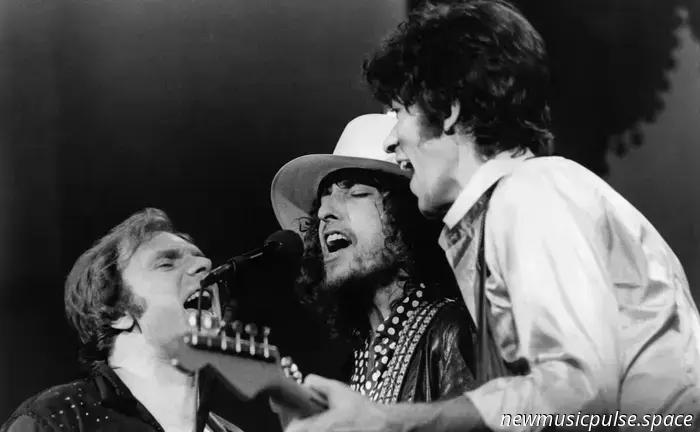
The Bob Dylan body of work is closely associated with social injustice, with his songs exploring inequality from the perspective of the marginalized and oppressed. While it's common to interpret "I Shall Be Released" in this context, I would argue that the 'prison' Dylan refers to is, in fact, the physical body, this human form.
by guest writer Cameron Tricker
I see my light come shining from the West unto the East. Any day now, any day now, I shall be released…
* * *
The Bob Dylan collection is linked to social injustice, with his music reflecting inequity through the experiences of the marginalized. It's easy to analyze "I Shall Be Released" similarly, as noted by influential critics in music, from David Yaffe to Rolling Stone. Considering Bob Dylan's connections with The Beat Generation and the evolving themes he tackled in the sixties, one might suggest that the interpretation of his song has been misrepresented.
Clinton Heylin, a keen Dylan analyst, argued that the song suggests a different type of release—one that is existential: “Not merely from prison bars but from the cage of physical existence.” The song's versatile character is evidenced by the countless artists who have covered it, including Joan Baez, Paul Weller, Nina Simone, and many others. In a way, it has transcended being solely Dylan’s work; The Band’s rendition has made it iconic as the encore of “The Last Waltz.”
The tragic suicide of Richard Manuel and The Band's connection to the song reinforce the idea that the longing expressed extends well beyond physical imprisonment. This song speaks to liberation from the confines of identity, from inherent human suffering. It expresses a desire to return to the serenity of a universal existence.
To understand Dylan's work in the sixties, it’s essential to consider his ties to The Beat movement. Recorded during the renowned basement sessions of 1967, the undercurrents of "I Shall Be Released" highlight Dylan's perspective at the time. His friendship with Allen Ginsberg, whom he met in 1961, is well documented, and Dylan clearly admired the works of other Beat figures like Jack Kerouac and Gregory Corso. He even stated that reading Kerouac’s Mexico City Blues completely ‘blew his mind’ in the late '50s. The ideas of The Beats were undoubtedly influencing him throughout the subsequent decade.
What were the beliefs of those writers? How do they connect to the song? Central to their exploration was the examination of Eastern philosophy, particularly Buddhism. Kerouac fluctuated between Catholicism and Buddhism during his life, returning to Christianity before his untimely death in ‘69. In the '50s, Buddhism appeared to him as a remedy for the pervasive pain he felt in existence. For him, the dharma illuminated the illusory nature of reality and provided him clarity. He shared with Ginsberg in 1954: “I always suspected that life was a dream, and now I’m reassured by the most brilliant man who ever lived (The Buddha) that it indeed is.”
Kerouac expanded this idea of the fleshly prison when he told Escapade Magazine: “Life is nothing but a short vague dream encompassed by flesh and tears.” This notion might seem grim, alien to many in the Western world. In capitalism, identifying distinctly with the self is fundamental. Ideas of individualism, progress, commerce, and legacy are all tied to the belief in a static ‘self.’ People work, contribute, accumulate, and eventually die, hoping their name and accomplishments live on, granting a fleeting sense of existence beyond death. Buddhists argue that the realization of ‘no-self’ leads to true liberation, suggesting that attachment to the self is the prison many find themselves in.
These thought patterns were part of Dylan’s exposure through his involvement with The Beat movement. His lyrics in "I Shall Be Released" reflect the dreamlike aspect of existence and an unfixed self:
“Yet I swear I see my reflection
Some place so high above this wall.”
A reflection is fleeting and intangible, not a true ‘subject.’ Reflections lack substance, resembling a mirage. The narrator's location remains ambiguous. Are they a projection in the sky? Do they feel free? There’s a longing to be separate from the physical reality they describe, perhaps from the vessel they inhabit.
“Standing next to me in this lonely crowd,
Is a man who swears he’s not to blame.”
The paradox of “lonely crowd” suggests that entrapment in the notion of self can isolate us from each other. While rejecting blame fits the incarceration theme, in an existential sense, it embodies the idea that none of us are at fault for our existence. None of us chose this, and yet we navigate through suffering (and beauty) regardless.
Other Dylan songs from this period also clarify the connections between the songwriter, The Beats, and the metaphysical interpretation





The Bob Dylan canon is closely associated with social injustice, as his songs explore inequality from the perspective of the marginalized and oppressed. While it’s common to interpret “I Shall Be Released” in this manner, I would suggest that the 'prison' Dylan refers to is actually this physical body, this human existence.